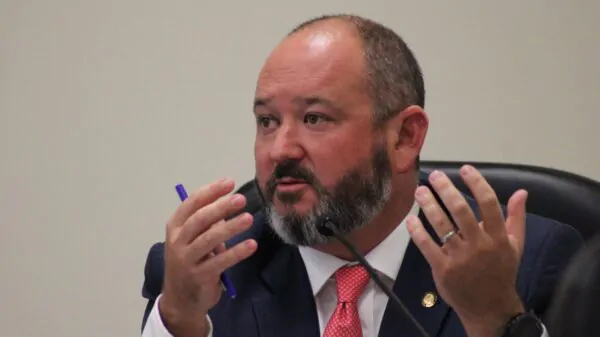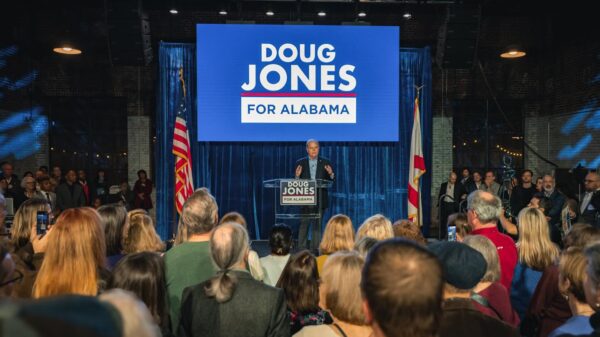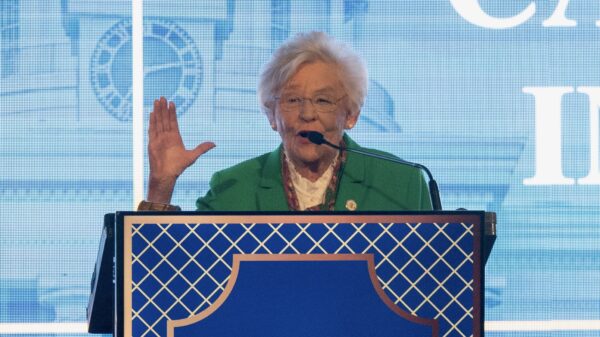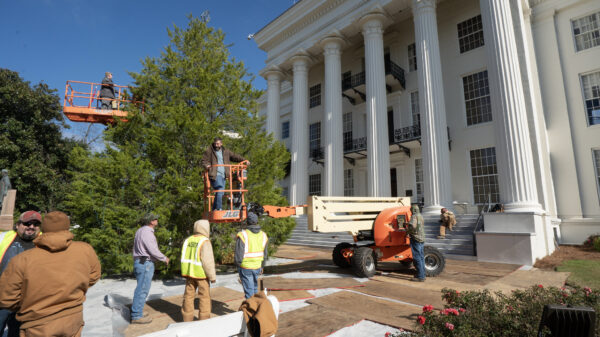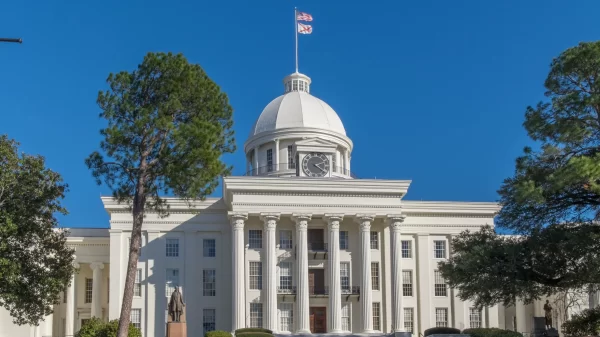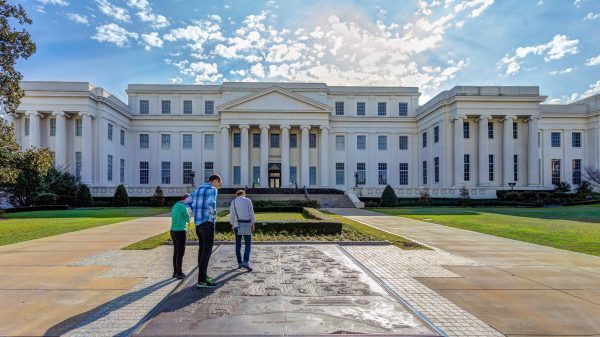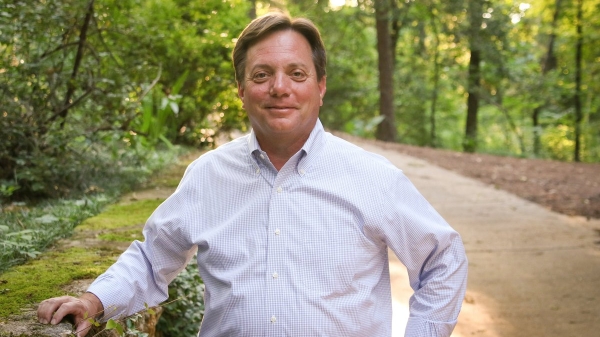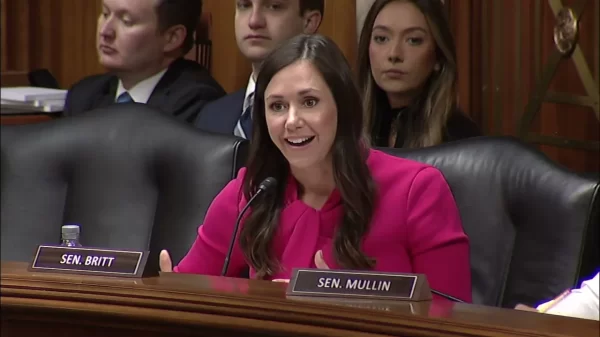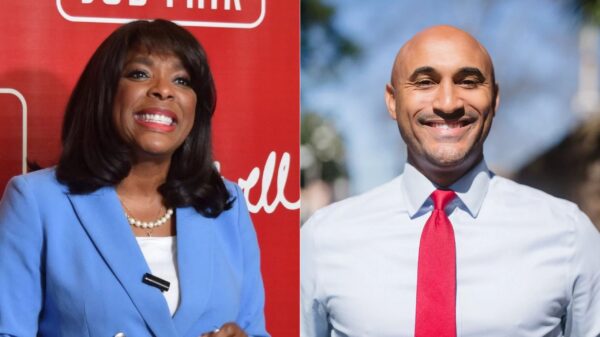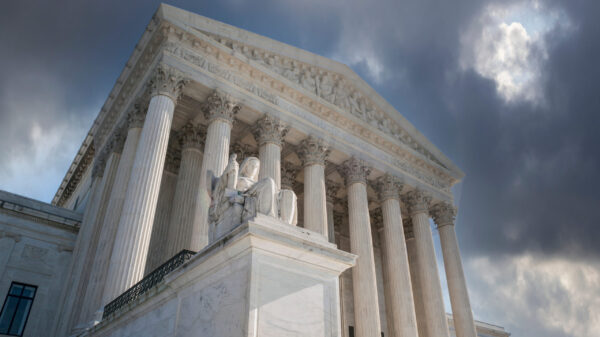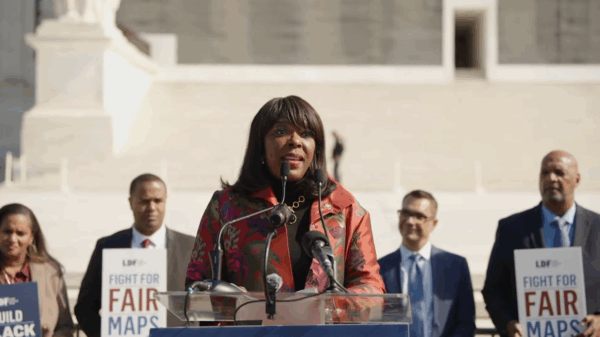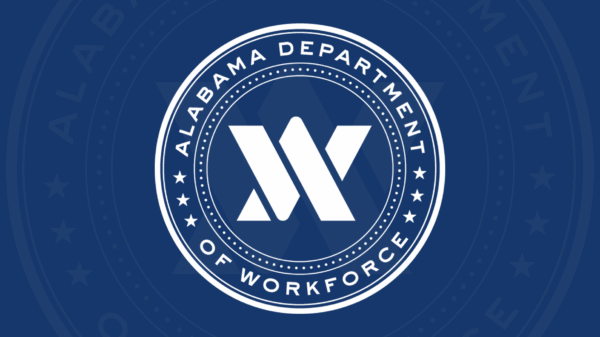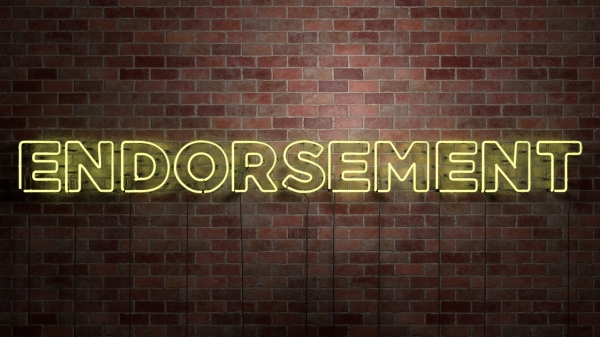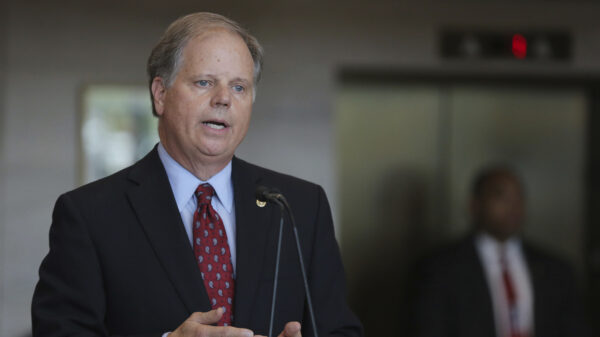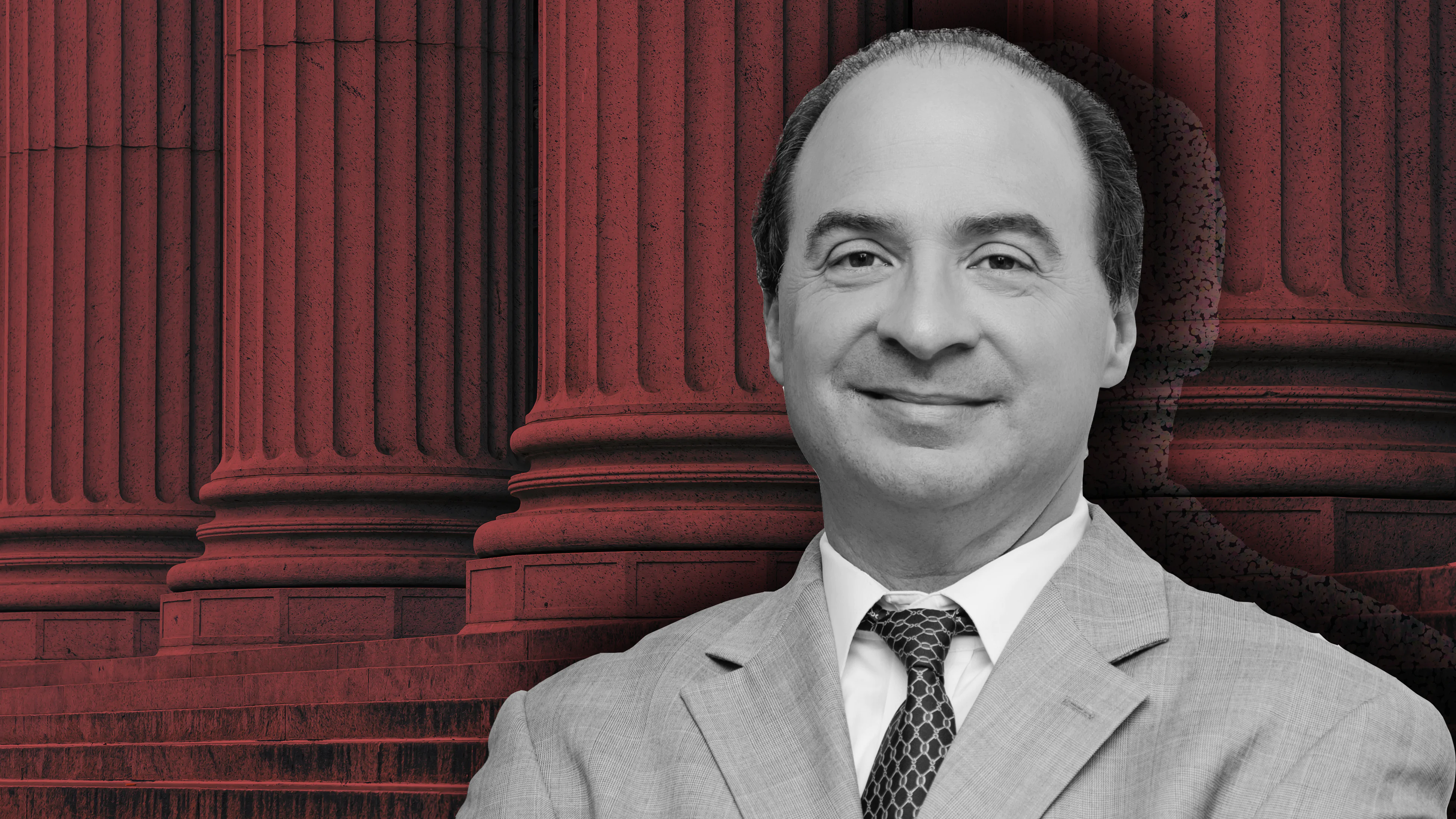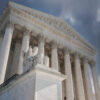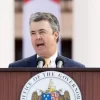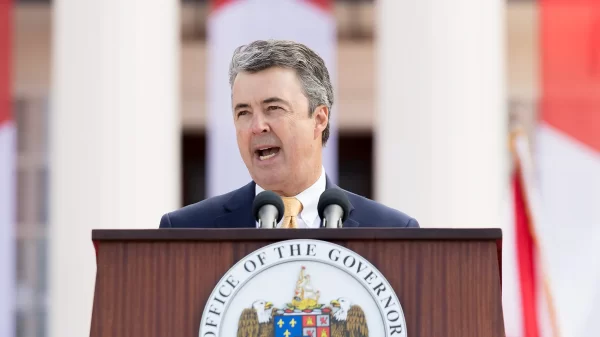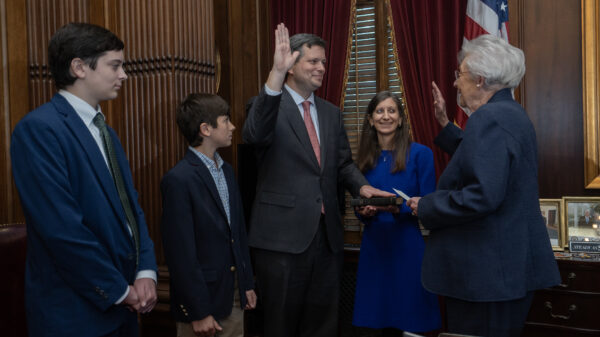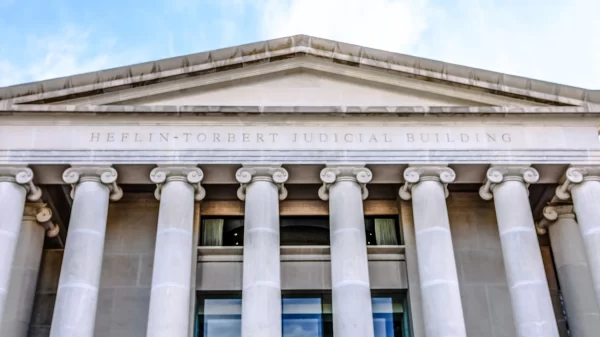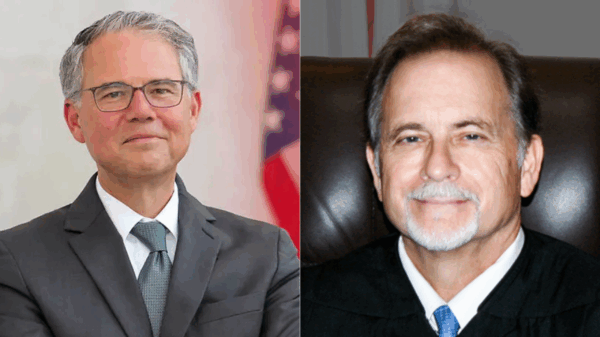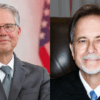John Bullock just wanted to go to his dentist appointment. It was December 19, 2012, a few days before Christmas, and Bullock, a Jefferson County businessman who owned Pink Variety Store in Pell City, parked in the lot that his Birmingham dentist’s office shared with the complex’s other tenants, including attorney Burt Newsome’s law office.
As Bullock exited his vehicle, Newsome was approaching his car, which was parked in the space next to Bullock’s. Without warning, Newsome, who Bullock didn’t know, had a handgun out by his side and began ordering Bullock back into his car. Newsome angrily told Bullock to stay there until Newsome left the parking lot. Dumbfounded and terrified, Bullock did as he was told. Newsome drove away without incident.
That bewildering encounter in the parking lot that day more than eight years ago, according to an opinion issued late last month by the Alabama Supreme Court, became the basis for an equally baffling and conspiracy-filled legal drama that went to the ALSC twice, clogged up numerous court dockets, prompted insane speculation on blogs, roped in dozens of people and left one of the state’s biggest law firms, Balch & Bingham, fighting tooth and nail. It also has brought about a mysterious $2 million payment to a struggling California-based nonprofit that is suddenly knee-deep in a fight between Alabama lawyers.
That lawsuit, filed by Newsome against Balch & Bingham, Bullock and others, claimed that Bullock’s presence that day in the parking lot was part of an elaborate scheme by Balch to poach Newsome’s clients and retaliate against Newsome for an earlier collections case. Over the course of the next four years, the lawsuit would expand to include other conspiracy theories — such as that an unwitting Calera man who happened to be linked online to a particular phone number was the mastermind of the whole affair. (He was not.)
In its opinion, the ALSC upheld a Jefferson County Circuit Court ruling for the Balch defendants — a party that included Bullock — and awarded attorneys’ fees to them.
The ALSC opinion also makes it clear that the court viewed the lawsuit as an exercise in the absurd.
It notes numerous times that Newsome fails to provide evidence of the conspiracy he alleges, failing not only to prove the conspiracy existed but that the subjects of his lawsuit even knew each other.
“Simply put, no fair-minded person in the exercise of impartial judgment could reasonably infer – based on the evidence before the trial court as opposed to mere speculation and conjecture – that the defendants conspired to stage an altercation that would result in Newsome’s arrest,” the decision said. “The trial court further awarded attorney fees and costs because the Newsome plaintiffs had subjected the defendants to almost three and a half years of litigation even though the asserted claims were without substantial justification. For the reasons explained herein, the summary judgments entered by the trial court and its awards of attorney fees are affirmed.”
The Grand Conspiracy
The original complaint filed by Newsome in the case — and all of what follows is contained within filings in the case — reads like the script of a Coen Brothers film, complete with half-baked conspiracies and incredible coincidences that provide just enough fuel to keep the whole thing alive.
At its core, the claim is this: An attorney at Balch & Bingham, Clark Cooper, conspired with another attorney, Claiborne Seier, and with John Bullock to trick Newsome into believing that Bullock meant to do him harm in the parking lot — somehow knowing that Newsome was both carrying a gun and would pull it — so they could get Newsome arrested and use that arrest to allow Cooper to poach Newsome’s clients.
If that sounds crazy, just wait for all of the context.
About 11 months prior to Newsome’s encounter with Bullock in the parking lot in Dec. 2012, Newsome had another confrontation in the same parking lot. That confrontation was with Alfred Seier, the husband of a woman that Newsome was suing on behalf of a bank client.
One of Newsome’s primary sources of income as an attorney was working on behalf of banks to collect debts. He had sued Alfred Seier’s wife over such a debt, and Alfred was very unhappy about this. So unhappy, in fact, that he threatened Newsome that day in the parking lot with a gun. Newsome was terrified, ran away and later filed charges against Alfred.
Claiborne Seier, who is Alfred’s brother, reached out to Newsome after the charges were filed and attempted to coerce Newsome into dropping them. Claiborne told Newsome that his brother was a very sick man — he would die six months after the charges were filed — and that he wasn’t in the right state of mind. Newsome refused to do so.
Newsome believes that his refusal to drop the charges so angered Claiborne that he began plotting his revenge. And somehow — although the somehow is never made clear — Claiborne connects with Cooper and with Bullock and they concoct — possibly in a smoke-filled backroom — an elaborate scheme to exact revenge and to get Newsome’s clients.
First, they convince Bullock to go and “park like” Seier did nearly a year before. Then, Bullock is to “exit his car like” Seier did that day 11 months earlier, preventing Newsome from getting immediately into his car. Then, just as they knew he would, Newsome is to pull a gun on Bullock.
Danny Ocean would be proud of this plan, because it worked like a charm. And six months later, Newsome was arrested following a routine traffic stop for speeding.
But here’s where things get messy: Cooper, who also did bank work for Balch & Bingham, found out about Newsome’s little run-in with the police. Cooper wanted to add more bank clients to his billing sheet and squeeze Newsome out, so he emailed a copy of the arrest report and Newsome’s mugshot over to a bank client, IberiaBank, for which both Newsome and Balch did work. The bank, in response, stopped sending work to Newsome for a period of time, and Newsome, as you might imagine, was none too happy.
The Conspiracy Grows
For some reason, the lawsuit filed by Newsome was not immediately tossed out of court, and he was allowed to proceed with discovery in the case. Part of that discovery was obtaining phone records for the parties involved.
In those records, Newsome discovered the same phone number had placed calls to the alleged conspirators on or around significant dates in the alleged conspiracy. For example, someone at the number had called Cooper four times on the day of the Bullock-Newsome parking lot encounter and called both Cooper and Seier on the day Bullock filed charges against Newsome.
After an internet search, Newsome found the owner of the number to be 76-year-old Calera resident Don Gottier. An amended complaint filed by Newsome essentially names Gottier as the mastermind of the entire conspiracy.
Why? How does Gottier fit into all of this? Well, that’s a bit of a mystery, especially to Gottier.
After receiving notice of the lawsuit, Gottier went to Calera Police and reported that his identity had likely been stolen, because he was being named in a lawsuit in which he didn’t know a single person. There was also the small fact that the number didn’t belong to him.
{{CODE2}}
In fact, the number didn’t belong to anyone. During its investigation, the Calera PD learned from Verizon Wireless that the number in question was a routing number and had served as such since 2007. A Verizon official testified in a deposition that no person had been assigned that number.
Gottier, naturally, filed a motion to dismiss the case, but before that could be heard, Newsome went after the judge in the case, Jefferson County Circuit Court Judge Carole Smitherman, whose husband is state Sen. Rodger Smitherman. Newsome asked Smitherman to recuse from the case, alleging that she had a conflict of interest because, he claimed, she and her husband had received more than $30,000 in campaign contributions from political action committees and law firms associated with the defendants.
That wasn’t exactly true. While the donations were made, the majority of the money — more than $29,000 — had come from PACs to which some Balch attorneys had donated, hardly a direct contribution that would create a conflict. Another $3,400 donation came from a law firm that employs Alfred’s Seier’s widow as a paralegal.
The ALSC opinion sums things up best: “It is borderline absurd, however, to suggest that a campaign donation to the legislator spouse of a trial judge made by the employer of the wife of the brother of one of five defendants would be a basis upon which a person could reasonably conclude that the trial judge was biased in favor of the defendants.”
The Court Crier
Much of the Newsome lawsuit was kept out of the public realm by Judge Smitherman, who issued a gag order and placed the filings under seal. This was particularly a problem for blogger K.B. Forbes, who operates the banbalch.com blog.
APR has reported on Forbes and his history as an accused shakedown artist, utilizing blogs and his Consejo de Latinos Unidos nonprofit organization to berate companies into settlements that are questionably beneficial for him and CDLU. A number of publications — from Business Week to the Daily Beast — have raised serious questions about Forbes’ tactics and his motivations, linking him to his former boss, millionaire J. Patrick Rooney. (It should be pointed out that Forbes denied all of the allegations — both to APR and the other publications — and insisted that his organization was legitimate. When pressed by APR for specific answers about his dealings in the Balch matter, however, he stopped communicating. Forbes maintained that CDLU was actively engaged in community efforts supporting uninsured minorities and that his interest in the Balch case was merely to aid a friend who was wronged by a corporate giant.)
Rooney operated a small health insurance company, and many of CDLU’s targets of campaigns against overcharging just so happened to be major hospitals to which Rooney’s company owed millions of dollars. According to Business Week, CDLU filed 10 lawsuits against Tenet Healthcare for unfair billing practices. When Tenet agreed to reduce the debt Rooney’s company owed, CDLU dropped all 10 lawsuits, Business Week said.
CDLU also created websites to attack various hospitals and healthcare organizations — almost all of which Rooney’s company owed money, according to Business Week. Those websites were registered by Rooney. And they were remarkably similar to banbalch.com, both in style and function.
But banbalch.com has been remarkably more profitable for Forbes. A 990 tax filing from 2019 for CDLU shows the organization took in more than $2 million — almost all of it coming in payment for “services” related to “exposing corruption at a major law firm,” among other services.
{{CODE1}}
CDLU paid out only just over $30,000 in “grants and assistance” — the IRS terminology for the expenses normally incurred by a nonprofit for doing its stated work. CDLU paid Forbes more than $450,000 for the year. In total, it paid three executives, including Forbes, more than $700,000 for the year — more than 20 times the amount it spent on its stated charitable goals.
Exactly who dumped $2 million into a fledgling charity that was suddenly zeroed in on a weird lawsuit in Alabama is a mystery. The 990s do not list the source of the income, nor is it required to do so. But for all that cash, someone received in exchange a never-ending stream of tabloid-style headlines sensationalizing every aspect of the trial, and painting Balch and its clients as evil villains.
Screaming headlines on banbalch told of an actor being hired to stand in for a Verizon Wireless employee at a deposition and of a civil RICO case that was always just on the verge of being filed. The conspiracy against Newsome, according to banbalch, was vast and easy to prove. Judge Smitherman, who, along with her husband, was portrayed on the website wearing black-and-white prison garb, and was described as “dumb.”
Banbalch and Forbes also started targeting Balch’s clients, including arguably the firm’s biggest client, Alabama Power Company. Posts on the blog asked Southern Company, Alabama Power’s parent company, to drop Balch and raised questions about APCO’s involvement in the Newsome case. (That leap was made when Forbes discovered that the patrol officer who stopped Newsome for speeding and ultimately had to arrest him because of his outstanding warrant was the son of a former APCO executive.)
Then the attacks turned personal, as Forbes went after APCO CEO Mark Crosswhite, hinting in post after post at misdeeds and poor judgment but never firmly leveling accusations, and often encouraging Crosswhite to fire Balch. At the same time, Forbes was emailing journalists around the state, encouraging them to look into the allegations and write about the nefarious acts of APCO and Balch & Bingham.
In a couple of posts, though, Forbes seems to give away the game: “Why would a silk-stocking law firm like Balch & Bingham defend this alleged conspiracy to the death instead of settling the matter?” Forbes asked in a post from 2018 that he reposted in 2020.
The Other Case
It is not only Newsome’s lawsuit against Balch that has drawn tabloid-style headlines on banbalch.com, however. In 2019, Newsome picked up a new client — disgraced former Drummond Coal executive David Roberson, who has filed a $75 million lawsuit against his former employer.
Roberson was one of three people convicted in the North Birmingham corruption case, and he has maintained throughout that he did nothing wrong and followed the guidance of others at Drummond. More than a few people familiar with the case believe that Roberson was made the fall guy and left hanging.
But again, with Newsome as his attorney and Forbes writing about the lawsuit, the case has devolved into a mishmash of sensational allegations and questionable legal tactics. Most recently, Newsome submitted a lengthy list of witnesses he plans to depose, including some of the state’s most recognizable business executives. That list, of course, includes Crosswhite and attorneys from Balch & Bingham, and the case filings are once again filled with conspiracy allegations and secret plots.
. All of it seems less about garnering a courtroom win and far more about coercing a settlement — or more money from CDLU’s mysterious benefactor. In a filing submitted by Crosswhite’s attorneys last month, in which he argues against giving a deposition, Crosswhite argues that the deposition is nothing more than a ploy to apply pressure for a settlement. In it, he notes that the circuit court judge has limited the case to only Roberson’s dealings with Drummond, making it essentially an employment law case.
In that regard, the filing states, Crosswhite “has no knowledge that might be relevant to the proceedings.” It also notes that Crosswhite was never a party named in the amended complaint, and that his deposition didn’t come about until after Roberson sent Crosswhite an email asking Crosswhite to pressure Balch to “do the right thing and settle this matter fairly with me….” When Crosswhite didn’t respond to the email, the filing states, he was notified of the deposition.
The ultimate outcome of that case, and Crosswhite’s involvement in it, will not be settled for some time. But it, like the Newsome case, has generated numerous blog posts at banbalch and at other publications, such altoday.com. As noted in Crosswhite’s filing, many of the stories published on both websites often appeared before court filings were made public, and before the defense received notice.
Just another anomaly, one more out-of-the-ordinary occurrence, in one of the strangest, craziest set of legal battles to ever make their way through Alabama courts.




